Horse Travel Books - page 3
The Equestrian Wisdom and History Collection
|
Horse Travel Books - page 3 The Equestrian Wisdom and History Collection |
For more information about any of these books, please contact the Long Riders Guild
|
A Wanderer Till I Die - While travelling in the jungles of Celebes, American Long Rider Leonard Clark found the ruggedly mountainous island was inhabited by the hostile Toradia natives. He had dismounted, and was leading his horse through thick jungle when he was ambushed. “The business end of a spear rested on my throat and a shadowy Toradia head-hunter held the haft.” The natives bound him securely and held him captive. Clark finally convinced his captors to release him, but when he emerged from the hut where he had been held, he was roughly informed, “The pony was killed with a spear through the heart and butchered.” This episode in Clark's thrilling book is the only one known in Long Rider history. |
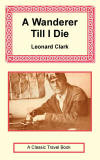 |
|
|
s 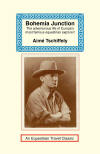 |
| Born to Raise Hell – Famed soldier of fortune Tex O’Reilly should not have lived long enough to tell this tale. He fought alongside Teddy Roosevelt and Rough Riders, hunted Moro rebels in the Philippine jungles, battled the Boxers in China, assisted Pancho Villa in Mexico and led the Spanish Foreign Legion in Morocco. So it comes as no surprise to learn that Tex volunteered to ride 1,700 miles from San Antonio, Texas to Chicago, Illinois bearing a message from the Governor of Texas to President Taft. |
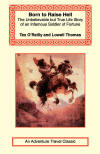 |
|
|
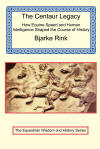 |
|
|
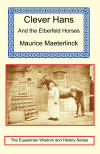 |
|
Deadly Equines - A fact-filled analysis reveals how humanity has known about meat-eating horses for at least four thousand years, during which time horses have consumed nearly two dozen different types of protein, including human flesh, and that these episodes have occurred on every continent, including Antarctica. Various sources of corroborating data, including legends, literature, cinema, news stories, scientific reports and eyewitness accounts are presented for the reader’s investigation. None of these items had been hidden. They were ignored, misinterpreted or, in some cases, censored. The result is the first exploration of the horse’s hidden history, an alternative equestrian world populated by forgotten facts, overlooked evidence and astonishing stories. Amply illustrated, and containing a map of occurrences, this study challenges the reader to develop a new understanding of the horse. |
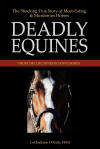 |
| Equus – First published in 1841, this book became the principal authority on all aspects of horse-related wisdom. The author, Charles Hamilton Smith, consulted, translated and transcribed every type of original texts, including works in Greek, Latin, Arabic and many Oriental sources. Nor was any topic off limits. Rare legal records detailing Welsh laws against horse abuse were unearthed. An early genetic examination of curly haired horses in Columbia was presented. Eyewitnesses were interviewed who had seen wild sultan-stallions attacking predators in Central Asia. The result is that this new edition is an equestrian time capsule, complete with the lost expertise of another age. |
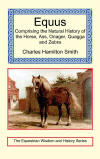 |
From Paris to New York by Land - Harry de Windt already had a reputation for bravery and foolhardiness. Then announced to a stunned Europe that he was going to leave his adopted home in Paris and journey to New York city. However instead of traveling west, crossing the Atlantic on a ship like everyone else in his day, de Windt proposed to travel east, across the frozen steppes of Siberia by horse-drawn sleigh, over the ice-packs of the Arctic Ocean by dog-sled, through the dark waterways of Canada by boat, and finally past the western deserts of the United States by train, before finally reaching his destination in faraway New York. |
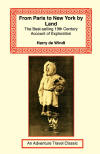 |
| Gaucho Laird – Robert Cunninghame Graham was an author, explorer, politician of extraordinary talents and considerable courage. In a crowded life — Cunninghame Graham was variously a Member of Parliament, a gaucho in South America, a fencing master, a founder member of the Labour Party and Long Rider through North and South America. This biography also explains how his most important contribution to Long Rider history was the critical role he played in getting “Tschiffely’s Ride” published. |
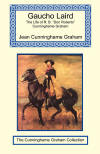 |
|
Hidalgo and Other Stories - For the first time in history, here are the collected writings of Frank T. Hopkins, the counterfeit cowboy whose equestrian travels, endurance racing claims and Old West fantasies were exposed by the Long Riders’ Guild. |
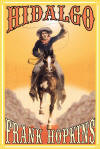 |
| The Horse-World of Victorian London - Originally released in 1893, “The Horse World of Victorian London” provides an insight into the city’s incredible lost equestrian world. At the dawn of the 20th century, there were an estimated 300,000 horses living and working within the city limits of Great Britain’s capital. The nineteenth century was the golden age of the horse and this well-illustrated book serves as a unique guide through London’s vanished equine world.
|
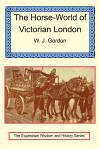 |
| Horseman's Progress - Vladimir Littauer was an officer in the Russian Imperial Cavalry and fought on horseback in the First World War. His knowledge and understanding of horses was unsurpassed. The book is divided into four parts which show how the customs and ways of life in different periods have affected the horseman's progress. Court, cavalry and sport have all had their influence. Littauer also discusses modern riding in Italy, France, Germany, England and the United States and each country's contribution to the development of riding.
|
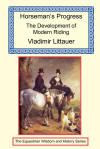 |
Horses - The Celebrated Study of Mankind's Closest Ally by the distinguished Frontier Philosopher, Roger Pocock. This was his most famous foray into academic study. In today’s equine-friendly world it is difficult to imagine how revolutionary Pocock’s observations about horses were at the time. A lifelong student of equine behaviour, Pocock set out to document the wisdom of his age into a book unique for its time. |
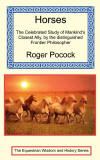 |
| Horses of the Conquest – Beginning with Columbus in the late 15th century, Iberian horses accompanied their riders across turbulent seas, over miles of mountain trails, through steaming jungles, and into cities of golden splendour. No book ever equalled this equine account of the horses that helped them make history. The author, Robert Cunninghame Graham, was uniquely qualified to pen such an important equestrian tale. Fluent in Spanish, Cunninghame Graham did extensive research into Spain’s archives, thereby discovering manuscripts which had lain unread for centuries. |
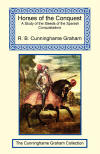 |
| Horses, Saddles and Bridles - General William Harding Carter was considered one of the United States' s foremost experts on both the horse and his equipment. This volume covers a wide range of topics including basic training of the horse, care of its equipment, managing a stable, and riding methods. |
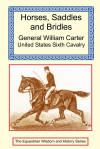 |
| Mounted Archery in the Americas - This fascinating and amply illustrated book charts the history of mounted archery from its ancient roots on the steppes of Eurasia thousands of years ago to its current resurgence in popularity in the Americas. It also provides the reader with up-to-the-minute practical information gleaned from a unique team of the world’s leading experts. |
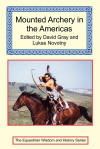 |
|
Rodeo – This is an omnibus of the finest work of Robert Cunninghame Graham, the Scottish Long Rider they called “the uncrowned King of Scotland.” The stories canter across a wide vista, ranging from the rolling pampas of Argentina to the cruel cities of Europe. They are inhabited by the characters whom Don Roberto knew, ranging from mysterious Moroccan sherifs to dying Sioux chiefs. As if to add a hint of equestrian history, Rodeo was edited by Aimé Tschiffely, the most famous Long Rider of the 20th century and a close personal friend of the author. |
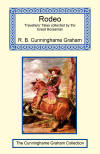 |
|
Round and About Spain – The Second World War had recently concluded and life in England was still full of hardship and rationing. In search of new adventure, Aimé Tschiffely travelled for five thousand miles around Spain - on a motorbike. |
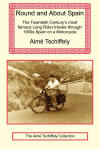 |
|
Russian Hussar - Vladimir Littauer served in the Russian Imperial Cavalry from 1911 to 1920. This book recounts, with humour and modesty, his experiences as a cadet at the Nicholas Cavalry School in St. Petersburg, through the hair-raising struggles of the First World War and the trauma of the Russian Revolution, to his escape in 1920. By the time you turn the last page, you will feel as if you have galloped beside the author through the early years of his amazing life. |
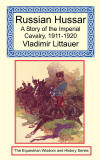 |
|
|
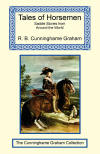 |
| They Rode into Europe - Written by famed Hungarian horseman Miklos Jankovich, the author had access to records in the Magyar language beyond the reach of most Western European researchers. He used a vast array of little-known historical information to create a coherent, comprehensive and authoritative picture of the relationship between mounted cultures from the earliest times to the late twentieth century.
|
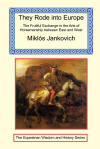 |
This Way Southward – After the outbreak of the Second World War, Aimé Tschiffely, the most famous equestrian explorer of the twentieth century decided to make a perilous journey across the Atlantic. His mission? To return to his old haunts in South America and undertake a harrowing 7,000 mile journey through Argentina, across the inhospitable regions of Tierra del Fuego and over the majestic Andes mountains. |
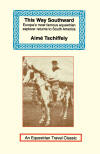 |
| The South Pole Ponies – While it is now commonly agreed that dog travel in winter conditions is an excellent methodology, abundant evidence demonstrates that this view was not shared by all polar explorers at the beginning of the last century. This unique book describes how two of Great Britain’s explorers, Shackleton and Scott, both used horses to try and reach the South Pole. |
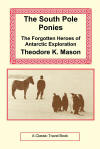 |
|
A Voyage to the Country of Houyhnhnms
-
Jonathan Swift rode extensively in Ireland in the early 1700s,
journeying from Cavan to Carbery. The solitude and interaction with his
horse laid the foundation for his famous book, Gulliver's Travels and
was the inspiration for the talking horses in the Voyage to the Country
of the Houyhnhnms.
|
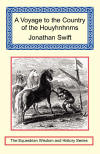 |
| Whisper on the Wind - The Story of Tom Bass, Celebrated Black Horseman – Born a slave, Tom Bass rose to the summit of what had always been a white man's profession, the training of the America's greatest Saddlebred horses. Bass was able largely to transcend the race barrier because he was accounted the greatest horseman of the late nineteenth century. The first black American ever to ride in Madison Square Garden, in an age when racial segregation ruled the nation, Tom Bass was the mounted friend of five presidents of the United States, including Teddy Roosevelt. |
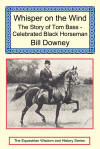 |
For more information about any of these books, please contact the Long Riders Guild